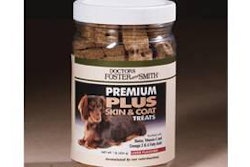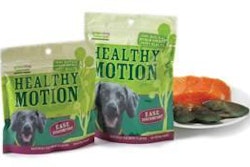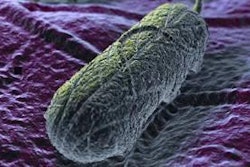
Since the early age of pet nutrition, innovations have become part of petfood's development. From the use of amino acids, flavoring agents, herbs and glucosamine, innovations have always had their prime spot in pet nutrition.
In the past 50 years, we have seen an evolution through the creation of dry extruded kibble, foods to help in disease treatments, natural, holistic, organic, as well as breed-specific foods. Product innovation seems now to converge toward nutrigenomics, which is the study of the way genes and nutrients interact and the reasons why people and animals react differently depending on their genetic variations. Nutrigenomics is linked to the action of ingredients on the body and lead to the functionality of these elements.
Let's look at some of the latest innovative functional ingredients originating from the most recent nutrition discoveries that help improve or maintain good health.
- Dehydrated fermented whey is a protein and bioactive nutrient rich ingredient manufactured from food grade dairy products that provides quality amino acids, glucose, minerals, vitamins, beta-glucans and mannans. It consists of the biomass material, metabolic products and substrate remaining proteins.
- L-carnitine is an amino acid, called vitamin B(t), which has a role in energy metabolism, cardiovascular function, weight loss control as well as helping maintain muscle tone.
- MOS (mannan-oligosaccharides) are carbohydrates from the yeast cell wall that help prevent pathogen colonization. These bacteria bind to MOS and are excreted with the stool instead of binding to the intestinal wall and reproducing.
- FOS (fructo-oligosaccharides) are fibers derived from chicory roots, sugar beet or cane and are an excellent food source (prebiotics) for beneficial bacteria. They aid digestion as theyare fermented by beneficial bacteria in the colon, helping then lowering intestinal pH and reducing stool odors.
- Thyme extracts are natural essential oils obtained by steam distillation of thyme leaves, which has antimicrobial activity at very low inclusion. They help lower intestinal pH while maintaining firm stools.
- Organic acids help promote beneficial bacteria presence by acidifying the intestines, thus reducing the presence of pathogens that do not like acidity. The following acids are generally used: fumaric, citric, lactic, phosphoric and malic.
- Cranberry extract is the concentrated cranberries' active components. Through their bacterial anti-adhesion properties, active phytochemicals help prevent bladder and urethra epithelial cells' E. coli colonization by urine acidification. Whole dried cranberries have often been included in petfoods but very rarely as extract.
- Microalgae are the only marine organisms actually synthesizing omega-3 fatty acids (EPA and DHA). Fishes accumulate omega-3s by eating microalgae or organisms that have fed on them. Since microalgae do not feed on other organisms, they are much more wholesome.
- Calcium butyrate is a source of butyric acid that helps keep intestinal wall cells in excellent health, thus improving nutrient absorption and protection against pathogenic bacteria.
- Betain is extracted from sugar beets, helps prevent dehydration (excellent osmo-regulator) and aids reduce energy needs. It facilitates liver function and helps maintain excellent digestive, intestinal and urinary health as well as optimal weight in normal feeding conditions.
- Yeast-autolysate (beta-glucans) is a natural extract from yeast that helps maintain a strong immune system by activating macrophages that can destroy viruses and bacteria that could affect animals.
- GOS (galacto-oligosaccharides) are carbohydrates derived from milk (lactose) and are an excellent food source (prebiotics) for beneficial bacteria. They act by helping digestive and intestinal functions, reducing inflammation and enhancing minerals absorption.
- Hyperimmunized eggs are a concentrated natural source of immunoglobulins that help improve general condition, vitality and help reduce various stresses affecting animals. They contain no drugs and act similarly to colostrum. These egg-specific natural antibodies are effective against pathogens by connecting to the intestinal wall receptors, thus reducing their colonization or possible production of toxins. They also help optimize joints and immune, gastrointestinal and cardiovascular functions.
- Gangliosides are an unusual type of lipid, which is a component of animal’s cell membranes (particularly in cells that line the gastrointestinal tract). Also found as part of the milk fat globule membrane (structures that contain the fat found in mammalian milk), dietary gangliosides can destroy Giardia organisms in the intestine, replenish gangliosides in cells lining the GI tract, as well as mediate GI inflammation. A gangliosides-enriched diet causes GI tract cells gangliosides concentration to nearly double.
Through nutritional innovations like these, let’s create more health for our companions.















